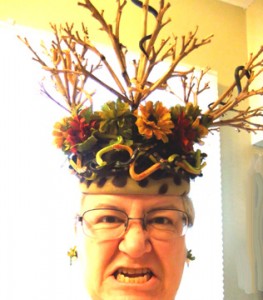 Rough History of Horror Fiction
Rough History of Horror Fiction
H.P. Lovecraft’s most famous quote about the genre is that: “The oldest and strongest emotion of mankind is fear, and the oldest and strongest kind of fear is fear of the unknown.” The first horror story was probably told around a fire by a caveman.
The roots of horror lie in folklore and religion — for Europeans in the Middle Ages that covered death, the afterlife, evil (represented by witches, vampires, ghosts, and demons). Greek mythology had a bit more diversity: giants, monsters, curses, and magical creatures and objects.
The 18th century spawned Gothic Horror, which drew on the supernatural over realism–typically represented by a female menaced in a gloomy castle. This trope was so pervasive, it spawned the sub-genre of Gothic Romance.
The 19th century brought the “classic” monsters: Frankenstein, Jekyll/Hyde, Dorian Gray, Dracula, etc. It also brought us the body of work by Poe.
The 20th century added new twists: Weird Tales, madness/cruelty, cosmic horror (Cthulhu), the antequarian ghost story (discovering a book or object that triggers evil), slasher films, splatter films, Tales from the Crypt, I am Legend (apocalyptic zombie like Romero’s) , Daphne de Maurier’s “The Birds” (eco-disaster)
Contemporary horror has enlarged the genre, with new tropes and revivals of older styles. With writers such as Stephen King, Laurell K. Hamilton, Dean Koontz, contemporary horror includes were-animals, urban fantasy, erotic gothic (vampires and more), alternate history, mashups, and grindhouse revivals .
Why Write/Read Horror?
Robert McCammon, one of the founders of HWA (Horror Writers of America), said, “Horror fiction upsets apple carts, burns old buildings, and stampedes the horses; it questions and yearns for answers, and it takes nothing for granted. It’s not safe, and it probably rots your teeth, too. Horror fiction can be a guide through a nightmare world, entered freely and by the reader’s own will. And since horror can be many, many things and go in many, many directions, that guided nightmare ride can shock, educate, illuminate, threaten, shriek, and whisper before it lets the readers loose.”
Technically “horror” is revulsion AFTER an event, while terror is dread BEFORE an event — but in fiction we lump the two together. The “shark music” helped ramp up the terror level in Jaws, while the victims’ bodies create the revulsion.
People read horror for many reasons. Horror can satisfy the need for a thrill (like a roller coaster). The monster/villain/menace can be a metaphor for real life events — like Godzilla and all those giant spiders/ants from 1950s films as metaphors for nuclear war.
Examples (ones that scare ME)
• Cujo and Jaws both rely on the unexpected monster — attacks out of the blue on victims trapped in the dubious safety of a vehicle.
• The Exorcist and Rosemary’s Baby use old school religious evil — the devil.
• There are several varieties of group devolution: Lord of the Flies, The Lottery, Fahrenheit 451, and 1984 — where the society itself is the threat.
• Fear of the crazy person next door, or the random stranger are used in The Collector, Misery, Silence of the Lambs, and The Illustrated Man.
• “Science gone wrong” got its start with Frankenstein, but lives on in movies like Jurassic Park.
• The Haunting of Hill House (the book) explores the boundaries between supernatural and insanity.
• The Amityville Horror (the book) shares with Jaws (the book) a financial subplot — the victims can’t afford to flee the villain.
What readers want: suspense, unexpected or shocking ending, believable characters, believable setting, unrelenting pace, something left to the imagination (especially when it comes to gore) — like the way we never get a good look at the monster in the first Alien movie.
What readers DON’T want: too much detail, giving away the ending, gore for no purpose, illogical actions — like the teenager who goes down in the dark basement after they know a murderer/monster is on the loose.

